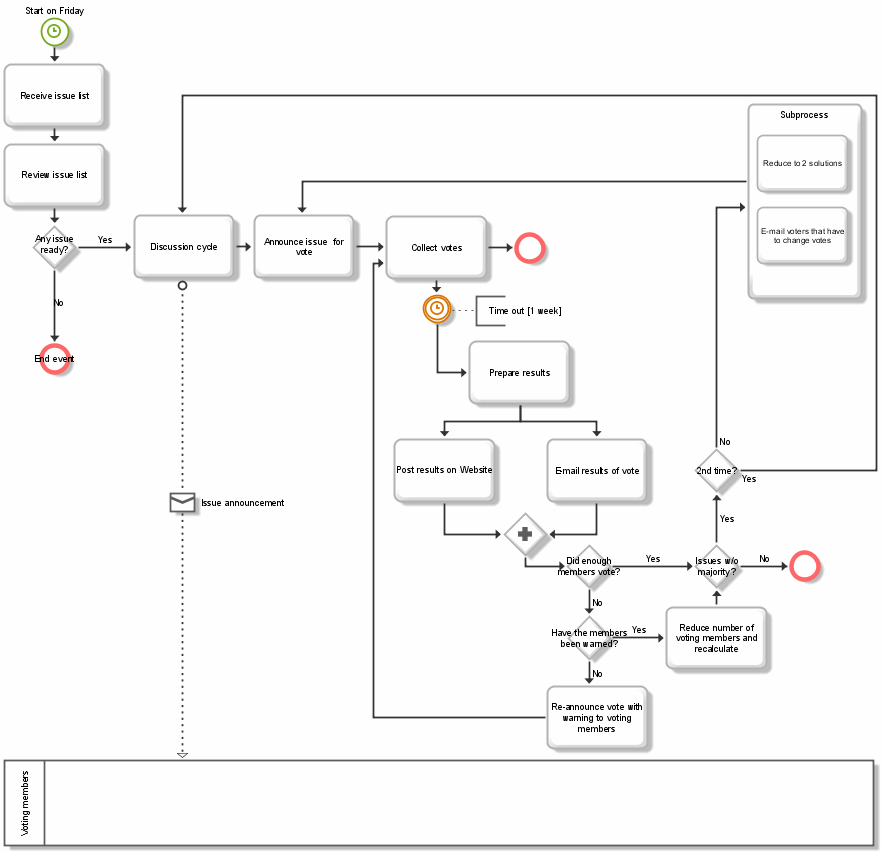Artifact
Artifacts provide information about the process. This information does not belong to the sequence flow or message flow. A total of three artifact types are differentiated: Data objects, Groups, and Annotations (the type list can be extended as required).
Data objects are comparable to information carriers or data elements in ARIS. However, in the broadest sense they could encompass all assignments. Data objects influence neither the sequence flow nor the message flow, instead they supply information about what happens during the process. They show how documents, data, and other objects change during the process.
A Group is a graphical emphasis of associated process elements. In ARIS, graphic objects, such as rectangles or polygons are useful for this.
Alternatively, groupings may also serve this purpose. However, this only makes sense if the grouping includes a graphic.
Annotations correspond to remarks about objects or connections, as in the following example Time out [1week]. In ARIS they are often realized with the help of the Remark/Example attribute. It is important that this attribute be placed in the model, as shown in the following example with Yes and No.
This figure shows an example of how a business collaboration diagram is implemented in ARIS according to BPMN 2.0. The diagram contains two pools, with the boundaries of the upper pool hidden. The individual elements of the lower pool are not shown.

